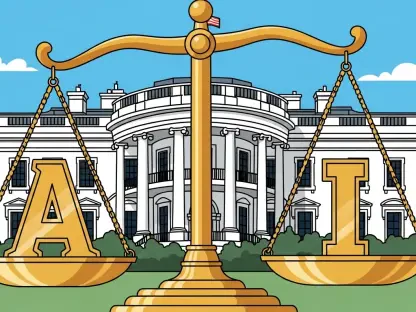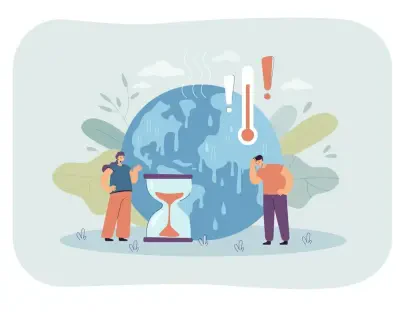Diving into the complex world of privacy regulations and their ripple effects on small businesses, I had the privilege of speaking with Desiree Sainthrope, a legal expert with extensive experience in drafting and analyzing trade agreements. With her deep knowledge of global compliance and keen interest in the intersection of law and technology, Desiree offers a unique perspective on how laws designed to protect consumers can inadvertently challenge smaller enterprises and stifle innovation. In our conversation, we explored the uneven burden of compliance costs, the impact on personalized marketing, the slowdown in innovation, and the broader implications for consumer access and fairness in the digital economy.
Can you share what first drew you to explore the impact of privacy laws on small businesses?
I’ve always been fascinated by how legal frameworks shape economic landscapes, especially for smaller players who often lack the resources of big corporations. My interest in privacy laws specifically sparked when I started seeing how regulations like Europe’s GDPR were affecting businesses differently based on their size. I came across stories of small startups struggling to keep up with compliance costs while larger firms adapted more easily. It made me want to dig deeper into whether these laws, meant to protect consumers, were unintentionally creating barriers for the very businesses that drive innovation and diversity in the market.
How do privacy regulations like GDPR disproportionately affect small businesses compared to larger corporations?
Small businesses often feel the sting of privacy laws more acutely because they don’t have the financial cushion or dedicated legal teams that big corporations do. Compliance with GDPR, for instance, requires significant investment in data storage systems, security measures, and sometimes even hiring consultants to navigate the rules. For a small firm, these costs can eat up a huge chunk of their budget—research shows increases of over 20% in some cases. Larger companies, on the other hand, can spread these expenses across a broader revenue base and often already have infrastructure in place to handle such regulations, giving them a clear edge.
Can you paint a picture of how rising data storage and marketing costs impact a typical small business after these regulations are enforced?
Absolutely. Take a small online retailer, for example, that relies on targeted ads to reach niche customers. Post-GDPR, they’re suddenly facing higher costs to store customer data securely and ensure they’re compliant with consent rules. On top of that, marketing becomes pricier because they can’t use data as freely to personalize campaigns, so customer acquisition costs spike. For a business operating on thin margins, this could mean cutting back on other areas like product development or even laying off staff. Certain sectors, like e-commerce or startups in personalized services, often bear the heaviest burden because their business model depends so heavily on data.
In what ways do privacy laws put a brake on innovation within the business landscape?
Privacy laws can slow innovation by creating barriers to how businesses, especially startups, use consumer data to develop new products or services. When data access is restricted, it becomes harder to test ideas or identify unmet needs in the market. For instance, we’ve seen a drop in new app launches and venture capital investment in regions with stringent rules because investors see higher risks and lower returns. It’s like rolling back the clock to a time when only big-budget companies could afford to experiment and reach consumers, leaving smaller innovators stuck on the sidelines.
How do restrictions on data use affect the ability of businesses to offer personalized products, and what does that mean for consumers?
When businesses can’t use data to tailor their offerings, consumers often lose out on products or services that match their specific needs. Think of niche markets—say, specialized beauty products for underrepresented groups or unique health solutions. Without data to identify and reach these audiences, companies might not bother developing those offerings. This can hit marginalized communities hardest, as they’re often already underserved. The result is a less diverse marketplace where only mainstream products survive, and consumers with unique preferences or needs are left with fewer options.
Can you explain how privacy limits might unintentionally exclude poorer consumers from certain opportunities?
Certainly. Poorer consumers often benefit from targeted advertising because it helps businesses identify them as potential customers, even if they’re not the most obvious market. Without enough data, companies might not realize these consumers are interested or able to buy, so they don’t advertise to them. This can mean missing out on critical opportunities like affordable credit offers, job openings, or discounted products. It’s a vicious cycle—less data means less visibility, which means fewer chances to access things that could improve their lives.
Why do you think wealthier and older consumers tend to prioritize privacy more than younger or lower-income groups?
From what I’ve observed, wealthier and older consumers often have more to protect—whether it’s financial assets or a lifetime of personal information they’re wary of exposing. They also tend to have greater awareness of privacy risks, perhaps because they’ve had more exposure to education on the topic. Younger and lower-income consumers, on the other hand, often see data sharing as a trade-off they’re willing to make for access to free or affordable services. These differing attitudes can shape policy debates, as lawmakers might lean toward the concerns of more vocal, affluent groups, potentially overlooking the needs of others.
Can you elaborate on how personalized pricing, like in the airline industry, can actually benefit lower-income consumers when data is used effectively?
Personalized pricing is often misunderstood as exploitative, but it can actually expand access. In the airline industry, for example, data allows companies to adjust fares based on demand and customer profiles. Wealthier travelers who book last-minute or value flexibility might pay a premium, while lower-income consumers can snag discounted fares by booking early or being flexible with dates. Without data to enable this kind of pricing, airlines might stick to flat, higher rates that price out budget-conscious travelers. So, in a way, data helps ensure broader market coverage, giving more people a chance to participate.
What is your forecast for the future of privacy regulations and their impact on small businesses?
I think we’re at a crossroads. On one hand, there’s growing recognition—especially in places like Europe—that overly strict privacy rules can hurt competitiveness and innovation, particularly for small businesses. We might see a shift toward more balanced regulations that incorporate privacy-enhancing technologies to protect consumers without crippling smaller firms. However, if the U.S. and other regions don’t learn from these lessons, we risk creating a digital economy where only the biggest players thrive. My hope is that policymakers will focus on smarter, more flexible rules that level the playing field while still safeguarding personal data.









